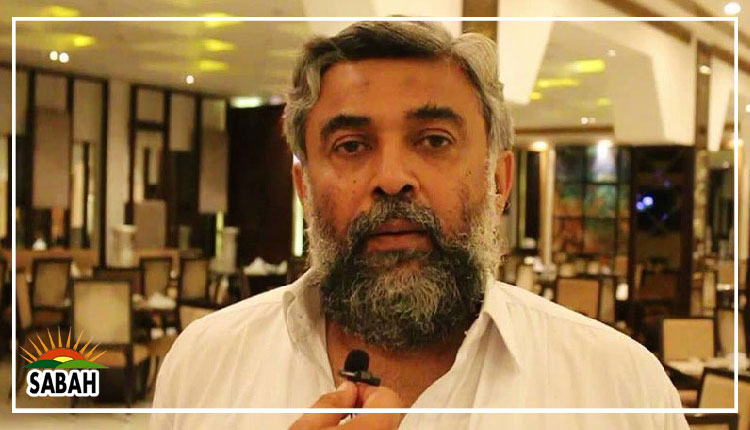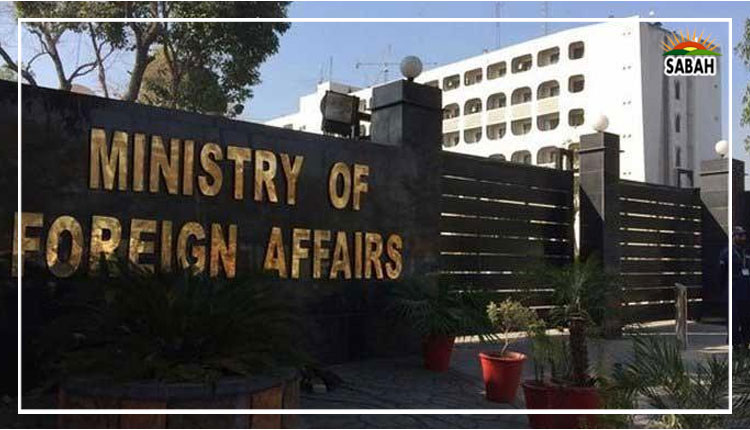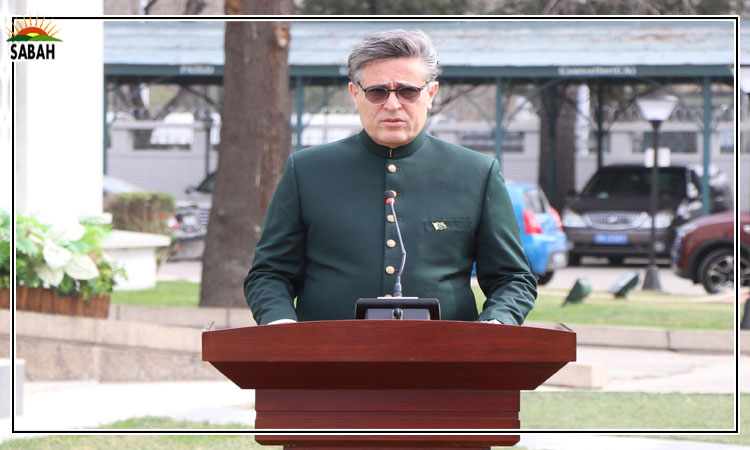The fall of Gate 47 ….. Naseer Memon
WHILE ‘Form 47’ continues to be the talk of the town, ‘Gate 47’ is generating a very different kind of buzz in Sindh.
For context, on June 20, Gate Number 47 of Sukkur Barrage suddenly collapsed, leaving Sindh’s irrigation system in a lurch. Water diversion to seven canals had to be curtailed at a time when irrigation demand for Kharif crops was peaking in the province. As a result, there has been considerable consternation among growers as their rice, cotton and sugarcane crops need water.
Sukkur Barrage forms the spine of Sindh’s agriculture economy, irrigating 80 per cent of all agricultural land in the province. The authorities are scrambling to manage the crisis with the help of Chinese experts who were already working on rehabilitating the barrage. The irrigation minister has also constituted a departmental committee to investigate the matter.
Boasted as a marvel of irrigation engineering, Sukkur Barrage has endured many technical challenges since its inception. Constructed in 1932, the barrage not only helped create a sizeable agricultural economy but also shaped the sociopolitical fabric of Sindh. Scholar Daniel Haines has unravelled the sociopolitical dynamics of the barrage in his book, Building the Empire, Building the Nation: Development, legitimacy and hydro-politics in Sindh, 1919-1969.
Before the advent of a perennial irrigation system during the British era, agriculture in Sindh was practised through primitive inundation canals. In an arid area with a scant average annual rainfall of 100mm, versus potential annual evapotranspiration of over 2,200 mm, rain-fed irrigation could only yield minuscule production.
Sir M. Visvesvaraya and Nawab Ali Jung Bahadur authored an insightful analysis, titled Report on Lloyd Barrage and Canals Project in Sindh, which reads: “In the greater part of Sindh, the yearly rainfall is negligible and only 10 per cent of the cultivated area is dependent on it. On the rest of the area, there can be no crops without an artificial supply from the river”.
The authorities are scrambling to manage the crisis with the help of Chinese experts who were already working on rehabilitating Sukkur Barrage.
This unfavourable climate prompted British engineers to contemplate a barrier on the Indus in Sindh to harvest river flows for growing crops. Col Walter Scott proposed a structure on the Indus between Sukkur and Rohri in 1847. However, for about six decades, the project did not gain any traction with Bombay authorities. Dr T. Summers revitalised the scheme in 1904, and it was finally endorsed by the Bombay Legislative Assembly on June 9, 1923. Physical work started in 1927, and the barrage was commissioned in 1932.
The stone masonry barrage has 66 gates, each having a span of 60 feet (18.2 metres). The structure began developing technical issues soon after its commissioning. It was observed that the right bank canals were drawing excessive silt. A hydraulic model study conducted in 1938-41 prompted authorities to construct a silt excluder and permanently close the 10 gates that had become dysfunctional due to siltation. This major deviation from the original design resulted in a reduction of the barrage’s flood passage capacity from 1.5 million to 0.9m cusecs.
Since then, 11 flood events have been recorded at Sukkur Barrage which have surpassed 0.9m cusecs, including six floods of more than 1.1m cusecs. The largest flood that passed safely was in 1976, of 1.166m cusecs. In 2010, the structure safely saw off a super flood of 1.131m cusecs; however, a breach near Torri bund upstream had relieved the barrage structure from a major thrust that could possibly have buckled it.
The recent collapse of a gate is not the first such incident in Sukkur Barrage’s history. Previously, Gate Number 31 collapsed with a big bang in the early hours of Dec 20, 1982. A technical report titled Failure of Sukkur Barrage Gate No. 31 and Replacement Programme Study, authored by Engr A.R. Memon, provides an in-depth analysis of the incident. A half-inch thick steel skin plate and an upper girder of the gate were smashed. Since December is a low flow time and the annual closure was just a few days away, it was easier to manage the crisis. Closure was advanced by a few days, and the pond level decreased by discharging water. The Pakistan Navy and Karachi Shipping Corporation were mobilised to replace the damaged gate with one of the 10 closed gates. The entire operation was completed within two weeks.
Subsequently, the Overseas Development Administration of the UK provided financial assistance for consultancy services for a technical investigation and replacement of all gates. Sir M. Macdonald & Partners and Newton Chamber (Ltd) were engaged as consultants, who conducted a thorough inspection of the Barrage. The study revealed that corrosion had reduced the gate’s strength and structural fatigue ultimately led to collapse of Gate Number 31.
A similar, comprehensive investigation of the abrupt failure of Gate Number 47 is required. The irrigation department in Sindh is plagued by rampant corruption, inefficiency and incompetence. Bad governance and substandard oversight also need to be probed. The engineering failure of any structure does not occur without prior symptoms. An efficient surveillance system could have rung a timely alarm bell before the mishap actually occurred, and perhaps some timely action could have averted the incident.
The ageing barrage infrastructure in Sindh also needs major overhauling. The Sukkur, Kotri and Guddu barrages were constructed in 1932, 1958 and 1963, respectively. Currently, a World Bank-financed Sindh Barrages Improvement Project is being implemented, which also includes the rehabilitation and modernisation of Sukkur Barrage. An urgent technical inspection of all gates of Sukkur and other barrages must be conducted before the onset of the fast-approaching monsoon season. A foreboding forecast of above-normal temperatures and rainfall demands extra vigilance and the maintenance of flood management structures.
The writer is a civil society professional.
nmemon2004@yahoo.com
Courtesy Dawn, July 1st, 2024












